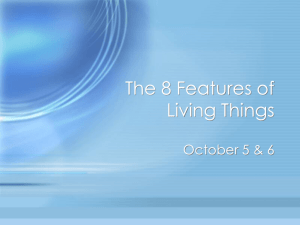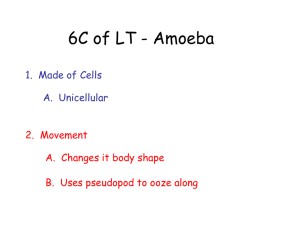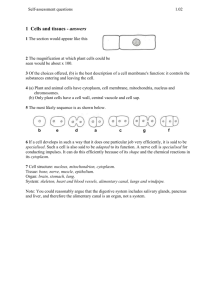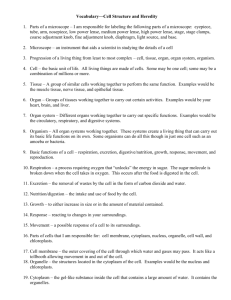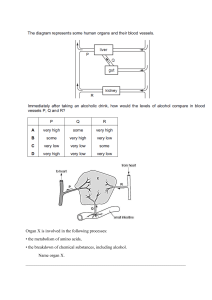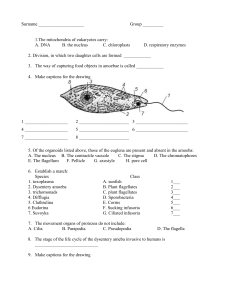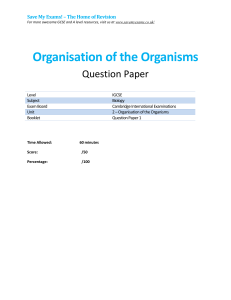Uploaded by
Robert Lennox
Year 7 Cell Biology Worksheet: Life Processes & Cell Structure
advertisement
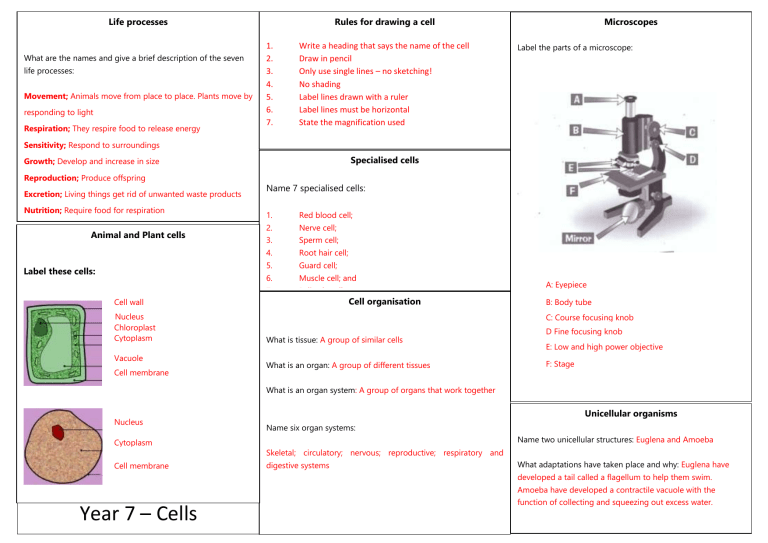
Life processes What are the names and give a brief description of the seven life processes: Movement; Animals move from place to place. Plants move by responding to light Respiration; They respire food to release energy Rules for drawing a cell 1. 2. 3. 4. 5. 6. 7. Write a heading that says the name of the cell Draw in pencil Only use single lines – no sketching! No shading Label lines drawn with a ruler Label lines must be horizontal State the magnification used Microscopes Label the parts of a microscope: Sensitivity; Respond to surroundings Specialised cells Growth; Develop and increase in size Reproduction; Produce offspring Excretion; Living things get rid of unwanted waste products Nutrition; Require food for respiration Animal and Plant cells Label these cells: Name 7 specialised cells: 1. Red blood cell; 2. Nerve cell; 3. Sperm cell; 4. Root hair cell; 5. Guard cell; 6. Muscle cell; and 7. Palisade cell; Cell wall Nucleus Chloroplast Cytoplasm Vacuole Cell membrane Cell organisation A: Eyepiece B: Body tube C: Course focusing knob What is tissue: A group of similar cells What is an organ: A group of different tissues D Fine focusing knob E: Low and high power objective F: Stage What is an organ system: A group of organs that work together Nucleus Cytoplasm Cell membrane Unicellular organisms Name six organ systems: Name two unicellular structures: Euglena and Amoeba Skeletal; circulatory; nervous; reproductive; respiratory and digestive systems What adaptations have taken place and why: Euglena have developed a tail called a flagellum to help them swim. Amoeba have developed a contractile vacuole with the Year 7 – Cells function of collecting and squeezing out excess water. Draw diagrams that show the position of organ systems in the human body Year 7 – Cells
